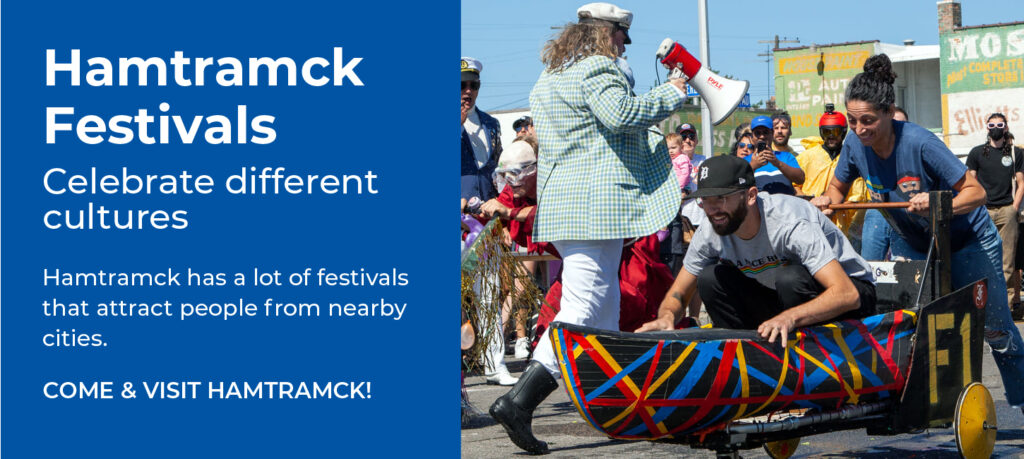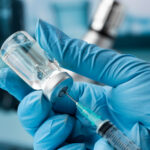About Hamtramck
Hamtramck is a city in Wayne County surrounded almost entirely by the city of Detroit, with the exception of a small portion adjacent to the similarly surrounded city of Highland Park. Hamtramck is approximately two square miles and lies approximately five miles from the center of Detroit, with I-75 running along its western border and I-94 bordering it on the south.
Hamtramck was named after Jean François Hamtramck, a French-Canadian soldier who fought in the American Revolutionary War and later was commander of Fort Shelby in Detroit. In 1796 Colonel Hamtramck took possession of Detroit when British troops evacuated and remained there until his death in 1803. In 1798, the township of Hamtramck was established with his name, and settled by French people from Quebec. In 1901, it was designated a village and consisted predominantly of German farmers. Hamtramck’s old world hospitality has its roots in the early 1900’s when it was a peaceful farming community with a population of 500.

Early History
Hamtramck owes its growth to the opening of the Dodge brothers’ plant, Dodge Main, in 1914. In 1910 Hamtramck had 3,559 residents, but between 1910 and 1920 the population grew to a staggering 46,615 due to the influx of Polish immigrants coming to work in the factory. In 1922, Hamtramck was incorporated as a city to prevent annexation by Detroit.
The Albert Kahn-designed Dodge Main closed in 1980 and was demolished the following year. In its place is General Motor’s Detroit-Hamtramck Assembly plant, opened in 1985 after the razing of six churches and the homes of approximately 4,200 residents of the adjacent Poletown neighborhood.
During the past 30 years, the city has also become home to immigrants from the Middle East, particularly Yemen, as well as immigrants from South Asia, predominantly from Bangladesh. While Hamtramck, whose city motto is “A league of nations,” is now very ethnically diverse, the city’s Polish history is still reflected in its street and business names. A total of twenty-eight languages are spoken by the school children in Hamtramck.
Demographics
According to the United States Census Bureau, the city has a total area of 2.1 sq mi (5.5 kilometers), all land.
The 2020 Census showed Hamtramck as the community with the second-highest population increase in Michigan over 2010 numbers. The 2020 Census showed a total of 28,433 residents, a 26.8% increase over our 2010 population.
As of the census of 2010, there were 22,423 people 6,777 households and 4,615 families residing in the city. There were 8,693 housing units. The racial makeup of the city was 53.6% white (which includes people of Middle Eastern ancestry), 19.3% African American, 0.3% Native American, 21.5% Asian, and 4.7% from two or more races. Hispanic or Latino of any race were 1.5% of the population.
There were 7,063 households out of which 38.4% had children under the age of 18 living with them, 40.3% were married couples living together, 18.1% had a female householder with no husband present, 7.0 had a male household with no wife and 34.7% were non-families. 29.9% households had someone living alone and of that, 9.2 were individuals who were 65 years of age or older. The average household size was 3.09 and the average family size was 3.98.

Festivals & Events
Hamtramck has many festivals that attract residents of nearby cities. Pączki Day, also known as Fat Tuesday or Mardi Gras, is celebrated by Poles and non-Poles alike by eating deep fried, jelly or custard-filled doughnuts. Many of the local bakeries open early and have lines outside the door. Other festivals include the Hamtramck Blowout, an annual independent music festival, the St. Florian Strawberry Festival, the Hamtramck Labor Day Festival, and the Planet Ant Film and Video Festival.
When there isn’t a festival to visit, visitors can go to the Polish Art Center, which highlights Polish art, books, and foods, and the Ukrainian American Archives and Museum, which showcases the culture, art, and history of Ukrainians. The Hamtramck Historical Museum, located next to the Polish Art Center, opened in 2013.










